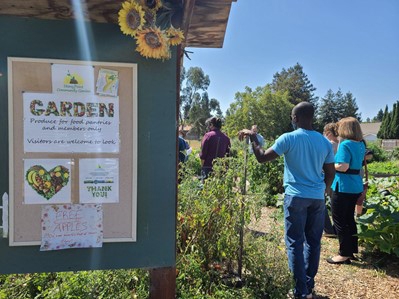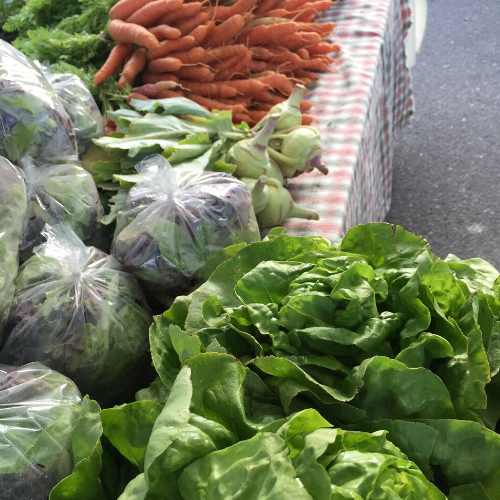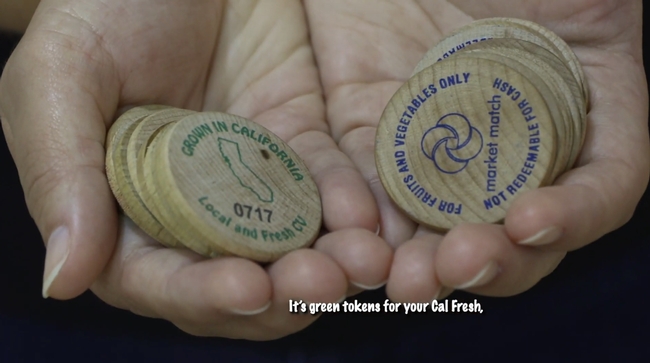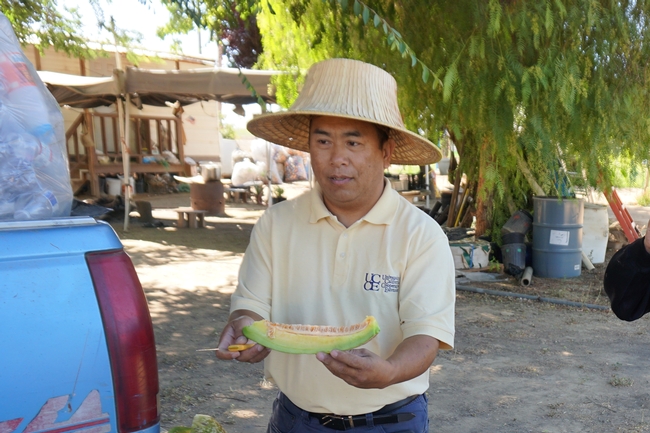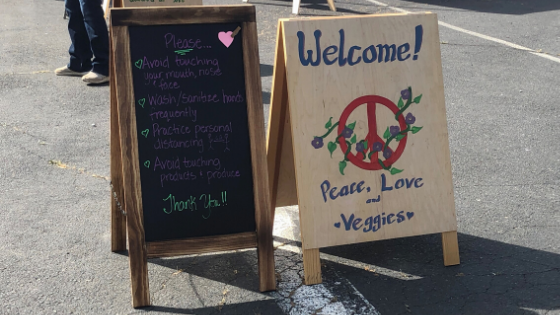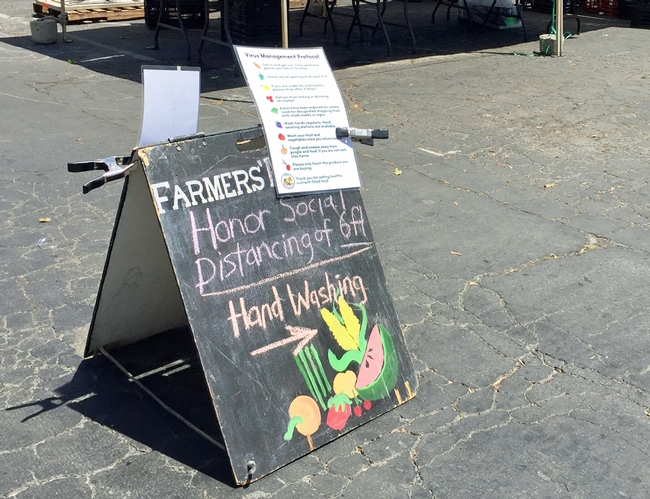
Posts Tagged: farmers
Growing Food & Land Access/Security with Urban and Peri-Urban Farms on Faithlands
On August 25th, UCCE's Urban Ag & Food Systems Program tabled, paneled and supported the 8th Annual Food, Faith and Farms Conference in San Rafael, CA, hosted by Interfaith Sustainable Food Collaborative. The national Faithlands Conference, coordinated between Interfaith and the Agrarian Trust, which hosts the national Faithlands web page as a hub for sharing resources, followed on August 26-27. Rob Bennaton, Urban Ag and Food Systems Advisor, was panel moderator for the Successful Farms and Gardens on Faith Community Owned Lands panel. Julia Van Soelen Kim, North Bay Food Systems Advisor led a workshop focused on Making the Most of Commercial Kitchens, and Vince Trotter, Sustainable Ag Coordinator & Agricultural Ombudsman with UCCE Marin County, led a different workshop on Halal and Kosher: Exploring Relationships with Local Small Livestock Producers. Julio Contreras, UCCE Community Education Specialist III with the UCCE Urban Ag & Food Systems Program, shared urban farming information, supported and facilitated throughout the conference.
The discussion was on one of the most challenging hurdles for beginning and immigrant farmers: securing land to grow food. Meanwhile, religious institutions own lands throughout the United States that are often suitable for agriculture. These plots of land may vary in size from a 1,000 square foot community garden to over 100 acres. Partnerships can allow faith groups to simultaneously save resources, advance food security, connect traditional faith-based stories to land and agriculture, and help small farmers overcome economic and structural barriers. The presenters described innovative projects, including a farmer leasing from a Seventh Day Adventist middle school that successfully transferred ownership 3 times in Sonoma County, CA. There was also a farmer who leased land from her church while developing a farm project, allowing for her to scale to the point she qualified for a USDA loan for a piece of land that has a home and infrastructure. Finally, partnerships were highlighted in which a perennial food forest and seed bank on the grounds of a 4-acre Episcopal Church site were established.
The Faithlands movement is growing nationally to connect and inspire faith communities to use their land in new ways that promote ecological and human health, support local food and farming, enact reparative justice, and strengthen communities. On the Agrarian Trust's Faithlands web page, download the free FAITHLANDS TOOLKIT A Guide to Transformative Land Use. Interfaith is a regional and national organization which supports congregations of all faiths, denominations and backgrounds by connecting them with farmers and supporting farm stand initiation, farmers markets, and CSAs.
The idea is innovative and yet traditional, since so many faith-based groups are doing community-based food systems work, such as emergency food distribution, operating commercial-scale kitchens, or stewarding lands that could be cultivated by local farmers.
In particular, lands stewarded by faith-based groups in urban areas present a huge opportunity for cultivation by urban farmers, given high costs of land values in cities. Land for Good is another great organization that supports land transfers for farming and the development of land use agreements. Their amazing ToolBox web page has significant resources for building and negotiating leases for- and with- farmers and landowners.
The conference had a great turnout with powerful speakers and groups doing inspiring work around the nation. Speaker Rabbi Justin Goldstein from Yesod Farm+Kitchen in Fairview, North Carolina, opened the conference, sharing key points on building relationships for indigenous lands stewardship, and the process of returning this unceded land. Food justice and sustainability leaders representing 47 different religious communities were in attendance. While most came from the North Bay and East Bay, there were also participants from elsewhere in California and eight other states.
As described on the Interfaith Sustainable Food Collaborative website, “For the first time the conference included tours of farms and gardens at 7 different faith-community sites. Diverse speakers included 8 farmers growing food on lands owned by religious institutions. Ammar Ahmed of Islamic Circle of North America in Washington, D.C. spoke about the response of Muslim communities in the U.S. to hunger during theCOVID Pandemic. He called on attendees to help with the national effort by Muslim and Jewish groups to urge USDA to make kosher and halal meat available to observant Jews and Muslims through an emergency food program. Advocates are concerned about protein options available to observant individuals who utilize TEFAP, The Emergency Food Assistance Program (A letter signed by some 47 members of Congress went toUSDA last week; we will keep the Interfaith Food network apprised of how to help with this work.)” - Steve Schwartz, Executive Director, Interfaith Sustainable Food Collaborative.
In the Bay Area, South Berkeley, East and West Oakland, and South Hayward congregations have established small farms and gardens with their congregations. UCCE's Urban Ag & Food Systems Program with Alameda County RCD and Interfaith is providing technical support to a new East Alameda Gurdwara farming initiative managed by the Sikh community there. If you know of a faith-based group interested in this work, please reach out to Interfaith Sustainable Food Collaborative. Our Urban Ag collaborative team is also ready to work with you.
UCCE is helping CalFresh shoppers double food dollars at farmers markets
Across California, CalFresh shoppers can use their EBT cards at most farmers markets and double the value of their benefit, up to $10 per family each market day.
“This benefit is underused,” said Chutima Ganthavorn, nutrition, family and consumer sciences advisor in Riverside and San Bernardino counties. “There may be a perception that farmers market prices are higher than in regular grocery stores.”
To help promote the Market Match program that makes shopping at farmers markets more affordable for CalFresh customers, Ganthavorn worked with the UC Agriculture and Natural Resources news and information outreach in Spanish office to develop videos in English and Spanish that clearly explain the program for potential users.
“Our program, CalFresh Healthy Living, UCCE, provides nutrition education to CalFresh-eligible participants in Coachella Valley to promote increasing consumption of locally grown, fresh fruits and vegetables,” Ganthavorn said. “Increasing buying power at farmers markets helps participants incorporate delicious, local produce into affordable meals for the whole family.”
To use Market Match, CalFresh recipients visit a kiosk at the market and use their EBT card to purchase $10 in wooden tokens. The program provides an additional $10 in tokens for purchase of fruits and vegetables only. The $20 can then be used to purchase items at all the farmers' booths that day at the market. Shoppers can look up participating farmers markets by going to FMFinder.org.
“Wow! These (videos) are terrific,” said Megan Goehring, the manager of the Palm Springs farmers market. “Will share on social media today.”
Senior Farmers Market Nutrition Program vouchers and Women, Infants and Children vouchers can also be used at participating farmers markets.
Below are the videos and their YouTube URLs for easy sharing:
Spanish -
English - https://youtu.be/dz6R_l123AE
Southeast Asian farmers devastated by cononavirus closures
With sales down dramatically at Asian markets and restaurants, crops on Southeast Asian farms have been left to wither away in the fields, reported Donald Promnitz in The Business Journal.
“I would say it's a 100% loss. I can't sell anything," said Chongyee Xiong, who used his earnings as a school groundskeeper to pay upfront expenses for his farm.
According to UC Cooperative Extension in Fresno, there were nearly 2,000 Asian farms in the San Joaquin Valley area in 2015. Roughly 70% of these were run by Hmong growers. The farmers typically produce crops they had previously cultivated in Laos — including Thai peppers, bok choy, snow peas and lemongrass. Some grow strawberries.
Farmer Chue Lee applied for loans through the federal Paycheck Protection Program, but found out he didn't have enough employees to qualify for aid. With a loss of about 70%, Lee may not be able to afford the lease for the two portions of land he has in Fresno County, which together amount to roughly 12 acres. Meanwhile, his own ability to access customers has been made more difficult by his wife's heart condition — which would make a Covid-19 infection devastating for her, the article said.
“Everything that we make, all that we're saving now is just like already out there and there's no help for us at all,” Lee said. “We tried to apply for all the releases, but there's nothing that fits into our category.”
UCCE ag assistant Michael Yang said there are also issues with technical literacy for the farmers. And without training with a computer, accessing aid online becomes nearly impossible. It increases the odds of losing everything.
“It's pretty tough when you come to a country where you have to relearn everything and the first thing you know is just farming,” Yang said. “And just bringing the clothes on your back is pretty much what you have.”
Supporting farmers markets in the time of COVID-19
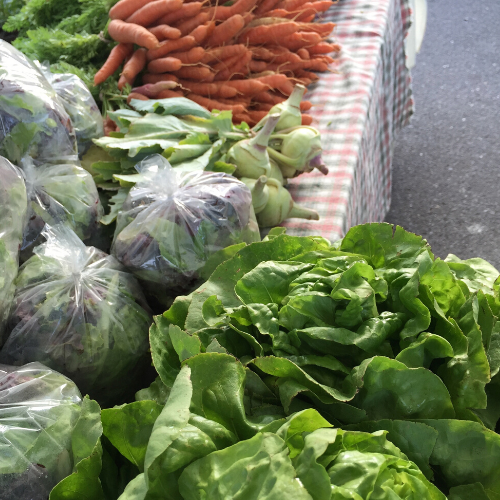
Bay Area Bee Fair on Oct. 13: The Place to 'Bee'
It's a fair. It's a party. It's a pollinator party. It's the Bay Area Bee Fair in Berkeley. And it's the place to be on Sunday, Oct. 13 at the Berkeley Flea Market, located at Ashby BART. The second annual event, free and family friendly, is set from 10 a.m. to 3 p.m. It will feature a...
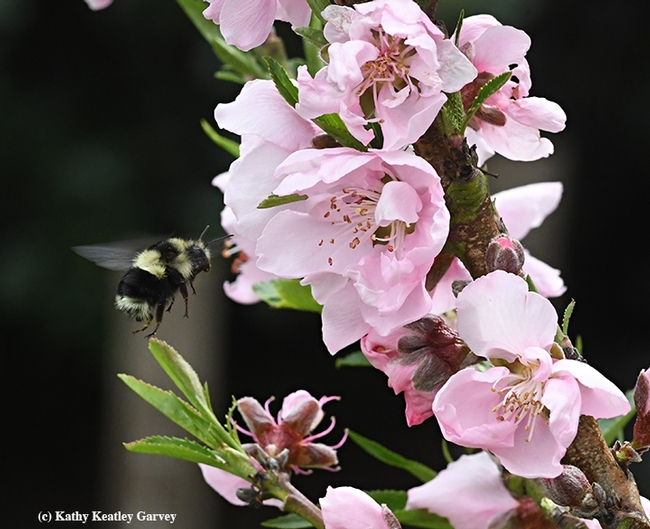
Black-tailed bumble bee, Bombus melanopygus, nectaring on nectarine blossoms. (Photo by Kathy Keatley Garvey)
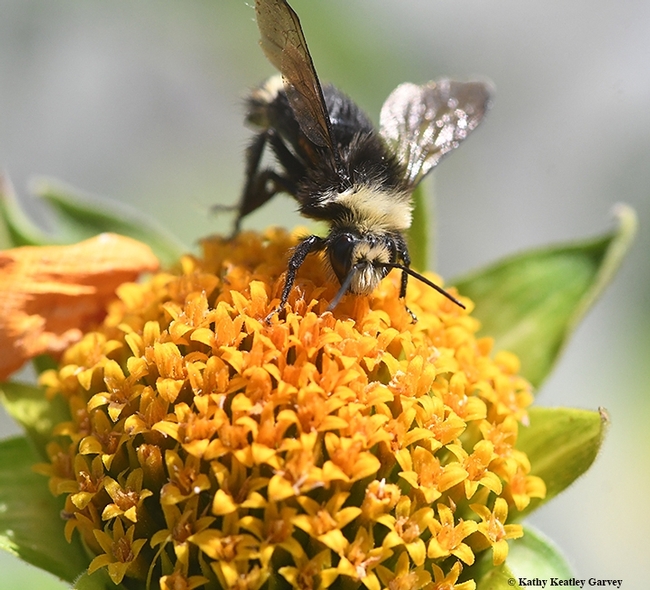
A yellow-faced bumble bee, Bombus vosnesenskii, nectaring on Mexican sunflower, Tithonia. (Photo by Kathy Keatley Garvey)
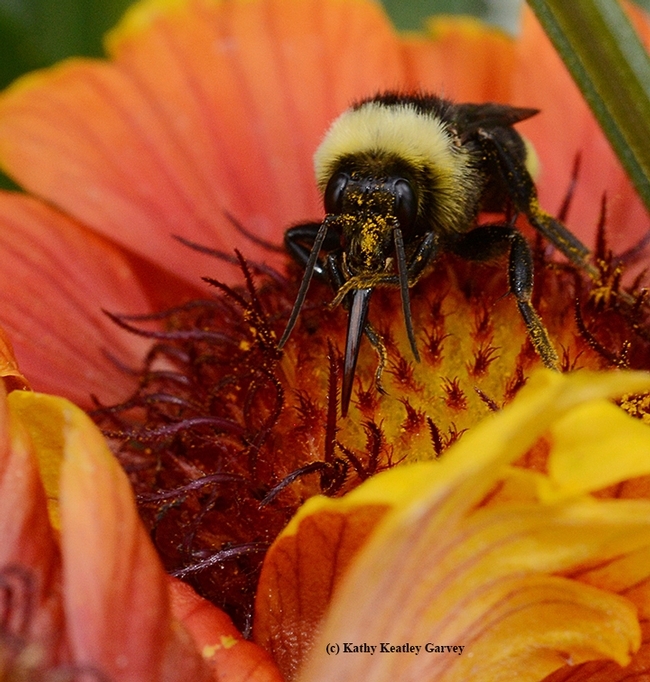
A black-tailed bee, Bombus californicus, nectaring on blanket flower, Gaillardia. (Photo by Kathy Keatley Garvey)
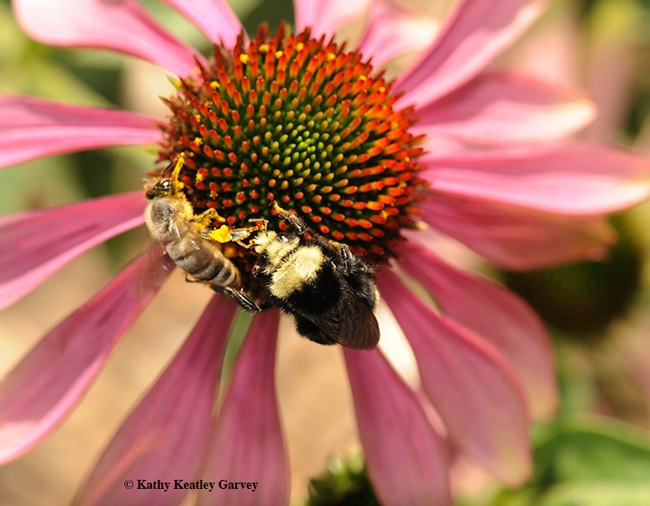
A bumble bee, Bombus vosnesenskii, and honey bee, Apis mellifera, sharing a purple coneflower, Echinacea purpurea. (Photo by Kathy Keatley Garvey)

